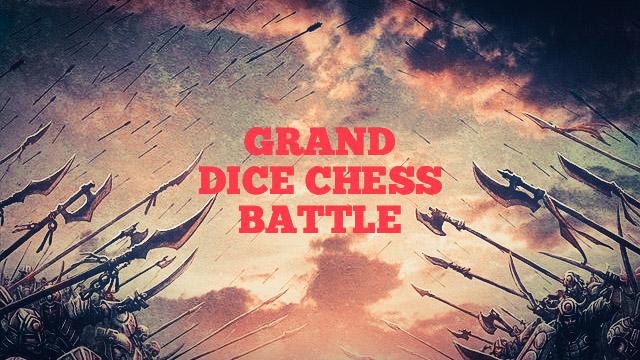
Grand Dice Chess Battle
As a longtime fan of all types of dice chess, I've always had the idea of finding a perfectly balanced chess game using dice. In the variants of dice chess that still exist, neither the board, nor the initial arrangement of the chess pieces, nor the number of dice used in the game give the game the necessary harmony and dynamics, reducing tactics and strategy to a minimum.
After much trial and error, I came to the only true variant of chess with a dice, in my opinion, which could satisfy the various needs of connoisseurs of this exciting game.
Moving in the direction that eventually led me to finding the perfect chess variants in which dice are used to alter gameplay, I constantly asked, strange as it may seem to you, the next question: 'What prevents a dice from revealing its full potential on a chessboard?' The answers did not immediately, but nevertheless began to be drawn more and more clearly as I went deeper into the root of the problem.
The first and most important is the size of the board - 8x8 even for a single die, bringing various chess pieces to life, an extremely cramped platform to realize its nature.
The second is the initial arrangement, since with the start of the game all the pieces should be more or less mobile. In ordinary dice chess, this is such an acute problem that it spoils the whole picture of the game, turning a chess battle into a farce. For example, in one of my 3 Dice Chess game, I, playing black, won immediately as soon as I had the opportunity to make a move with my pieces. Before that, I had to pass three times in a row!

Black to move and win
And the third obstacle is the rapprochement of the two armies. In a game with dice, this phase should be absent, since it takes a lot of time and patience, which does not correspond at all to the idea of dice - speed and racing.
So, having dealt with all these questions and answers, the following picture appeared before me:
Grand Dice Chess
The game uses a 12x12 board.
Each player has:
4 Kings
24 Pawns
8 Knights
8 Bishops
8 Rooks
4 Queens
In the initial arrangement, white and black occupy the 1st-6th and 7th-12th ranks, respectively, as shown in the diagram.

The game uses four dice.
White starts the game first.
Opponents make moves alternately, throwing 4 dice. The piece to move is determined by a die:
1 = pawn, 2 = knight, 3 = bishop, 4 = rook, 5 = queen and 6 = king.
The player makes four moves at the same time based on the indications of the dice and has the right to refuse any move that does not suit him, unless it is a pawn move. Exactly! Unlike in regular dice chess it's allowable to pass moves. And this rule was already applied about a thousand years ago in old variant of Shatranj (Shatranj al-Mustatîla or Oblong Chess), the Arabic pre-decessor of modern chess. However it's not allowed to pass on pawn-moves, except when they are blocked.
Chess pieces move across the board as they do in ordinary chess - according to the standard rules of move and capture.
The only minor exception is for a pawn that is not allowed to move forward two squares from its starting position.
Upon reaching the last rank, the pawn can be promoted to any piece except the king and itself.
There is no castling, check and checkmate in the game.
The goal of the game is to capture four enemy kings.
The very first game played with this variant turned out to be simply fantastically exciting and exceeded all my wildest expectations.
Position after Black's fourth turn:

Having quickly opened the center, the Black pieces went deep into the rear of the enemy, having managed to capture one King already.
Position after Black's eighth turn:

It would seem that nothing threatens White and they will easily eliminate Black's threats...
However, after only three turns, the position on the board changed dramatically:
Position after Black's 11th turn:

And after a few turns, Black won.
Position before Black's last turn:

Black (4, 3, 4, 5) to move and win.
Friends, I hope you enjoy this chess variant with four dice. It is dynamic, has unique tactical and strategic techniques that are not found in any of the variants of chess with dice.
Thank you!